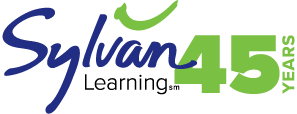Learn How Sylvan Makes Phonics Instruction Engaging and Efficient
MAR 10, 2021
Did you know, learning phonics in kindergarten, first grade and second grade gives our children a way to sound out 84% of the words in the English language?
What a powerful tool! But what exactly does “learning phonics” mean?
Well, English is an alphabetic language. The English language has 26 letters and those 26 letters—alone and in combination—stand for 44 sounds. Phonics instruction teaches these spelling-sound correspondences. Learning to sound out words is work, and sometimes, it’s hard work. But children who learn to sound out words then transfer that knowledge to new, unknown words.
Once children learn to sound out words, they begin to attach meaning to them. This, in turn, leads to understanding, or comprehension!
Children gain the most out of reading when they string words together in a sentence and relate the message to what they already know. Attaching new concepts to already-known concepts results in successful learning.
The impact of virtual and hybrid learning on early readers
With the prevalence of virtual and hybrid learning during the pandemic, kindergarten and first grade students are being hit the hardest in reading skills. A big part of learning to read includes using hands-on manipulatives to cement concepts, and multisensory instruction that helps students associate sounds with the letters and words they see on the page. Even with in-person instruction, many students don’t have access to hands-on materials because of hygiene regulations. Furthermore, when teachers are masked, young learners don’t always see their teacher’s mouth formation when making the sounds of letters (for example, “M makes the sound mmmm”). Emulation of sounds is key to helping students develop phonemic awareness, the skills involved in hearing and producing specific sounds, rhymes and patterns in words.
Creating a strong foundation for reading
Early readers are curious about the world, and learning to read is a great way to celebrate their enthusiasm! Like you, we believe that getting a good start on basic reading skills — from recognizing letters, to identifying sounds, to learning to read words — can grow your child’s confidence, nurture his or her sense of wonder and build a strong foundation for reading in elementary school.
Your local Sylvan team can assess your child to help understand his or her strengths and opportunities for improvement. We then meet to review the results and create a personalized program to help your child catch up, keep up or get ahead in reading! At Sylvan, we are experts at building skills, confidence and motivation.
Get your child off to a wonderful start in school with early literacy reading tutoring!
Here’s what makes Sylvan’s reading programs so effective
Rather than just placing your child in grade-level reading, we’ll assess his or her reading ability first. No assumptions! We’ll take the time to identify the type of reading help he or she needs to improve fluency, comprehension and reading competence.
Our programs meet students where they are. Some students might be in first, second or third grade and may need help mastering skills from earlier years. Our adaptive programs will utilize your child’s performance to find the specific skills that your child needs—so your child will learn efficiently and effectively.
5 phonics skills your child’s early literacy (or reading) program needs to teach
- Readiness skills: alphabet recognition and phonemic awareness are the 2 best predictors for reading success. Can your child name every letter of the English alphabet? Both uppercase and lowercase? Does your child know that the letter ‘s’ makes the ssss sound?
- Blending: Do you hear your child sounding out words? For example, if your child sees the word cat does she say, c – a – t? This is an indicator that your child’s teacher is modeling how to sound out words.
- Word awareness: Word sorts and word building give children an opportunity to “play” with letters and sounds. Learning phonics involves talk, observation, and application.
- High-frequency words: Children need to learn how to read the most-used words in English. Some of these words are irregular, such as the and of, and some of these words must be learned before children have the phonics skills to sound them out.
- Reading connected text: Decodable texts—stories that have a high percentage of words that children can sound out—have the biggest impact on practicing phonics skills.
How do you know if your child is struggling to learn phonics?
Can your child recognize rhyming words? Can your child hear the beginning sound in a word, like hat and replace that beginning sound to make a new word, like sat or cat?
Can your child tell you the most common sound that each consonant makes? Can your child read high-frequency words, like the, can, see, little, said, does?
When your child reads a story from his teacher, can he read out loud with understanding? Can he read out loud with expression? If he makes a mistake in reading out loud, can he self-correct based on context?
If any of those questions have you guessing, contact your local Sylvan today! Our talented directors would love to chat with you about how we can help your child.
